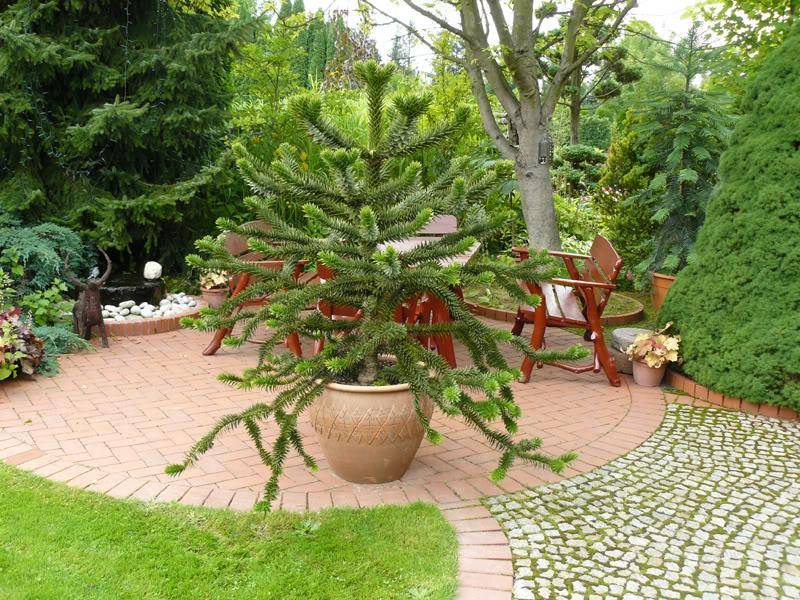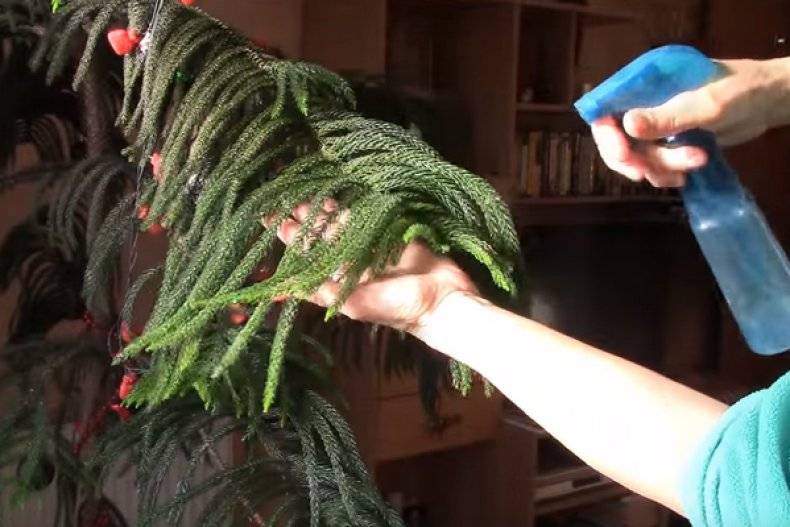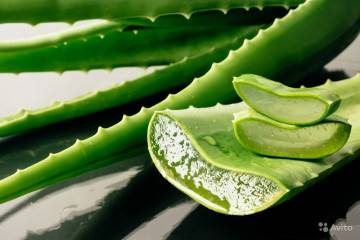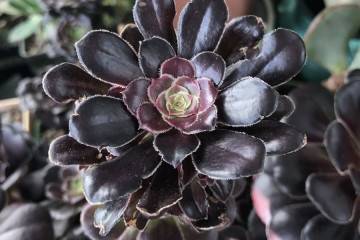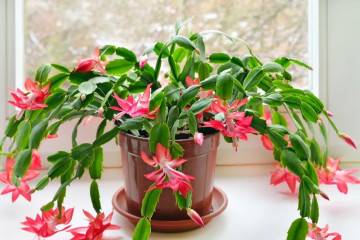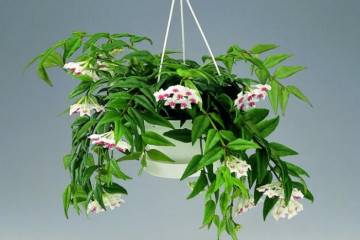Araucaria: home care and main varieties
Content:
If an araucaria is purchased, home care for it should have its own specifics. The plant is an ornamental crop that looks very much like a spruce. This is one of the few representatives of conifers that is successfully grown in tubs at home.
The main types of araucaria
The natural habitat of domestic spruce is South America, Australia and New Zealand, sometimes it is found in the Caucasus and Crimea.
The tree belongs to the Araukariev family. The plant is cultivated as an ornamental plant. Growing in pots, it rarely reaches a height of more than 1.5 m. Araucaria has several species, but only some of them are especially popular among gardeners and simply lovers of ornamental plants.
Bidwilla
The house tree in a pot araucaria of the Bidville species has the following description:
- leaves are large, their length is from 4 to 7.5 cm, width is 1 cm;
- plant cones are the largest in comparison with other representatives of araucaria;
- spruce height from 40 to 50 cm, diameter about 1 m.
Brazilian
Another name for the Brazilian araucaria is narrow-leaved. In its homeland in southern Brazil, the tree reaches a height of 50 m. It has long branches that hang down like whips. Leaf plates are linear-placental, their color is saturated green. The length of the sheet plate does not exceed 5 cm.
Heterophyllus
Araucaria heterophylla, or varifolia, in its natural habitat reaches a height of 60 m. Its bark is light brown peeling.
The leaf plates are tetrahedral, slightly bent upward, and are placed on the branches in a spiral. The length of each does not exceed 20 mm.
Other
Other types of coniferous trees look interesting and unusual:
- Chilean araucaria grows in western Argentina and Chile. Its height is up to 60 m, diameter is about 1.5 m. The bark is thick, resinous, covered with numerous cracks in the longitudinal position. The lower branches lie almost at the very ground, over time they die off. Lateral shoots are collected in whorls, each with about 6-7 pcs. A young and mature tree has branches perpendicular to the trunk. As they age, they begin to droop. The leaf plates are densely arranged, they are prickly, painted in a dark green color;
- araucaria cook. The birthplace of the plant is about. Pine. The branches are short, collected in whorls, from the trunk they grow at an angle of 90 °. Towards the top, the crown becomes wider. The bristly cones are 10 cm long. The needles are soft to the touch.
Home care
Domestic araucaria is relatively unpretentious, not requiring the creation of specific conditions.
Lighting
A place for placing a container with a tree should be chosen well-lit. But the branches should not be exposed to direct sunlight. In conditions of abundant diffused light, the plant should be at least 10-12 hours, regardless of the season. In winter, it is recommended to additionally illuminate from several sides with fluorescent lamps.
Temperature
Araucaria flower in summer should be kept at temperatures between 18 ° C and 22 ° C. In winter, the tree must be provided with a temperature of 6 ° C to 10 ° C in a room where there should be no drafts.
Humidity
Indoor araucaria loves high humidity. Twice a day, the tree must be sprayed with water at room temperature from a spray bottle.
Watering frequency
Caring for araucaria is simple, but proper watering is necessary for its comfortable growth. The soil in a container with a tree must always be kept in a slightly moistened state, but also prevent overflow and stagnation of water.
In winter, if the plant is kept in a room with the recommended temperature, watering is reduced, but without bringing the soil to dry out.
Soil and fertilizing
Soil suitable for araucaria should be acidic and loose. The soil can be purchased ready-made in the store, or you can make it yourself:
- 2 pieces of leafy land;
- 1 part of sod land;
- 2 parts of peat land and river, refined sand.
Caring for indoor araucaria at home includes regular feeding. Complex mineral fertilizers are used, which are sufficient to apply once a month during the period of active growth from the beginning of April to the end of August.
Plant transplant
Transplanting a plant is quite difficult and this procedure should be carried out only when absolutely necessary. Araucaria transplants very badly. The recommended frequency is no more than 1 time in 3 years.
The manipulation is carried out in the spring. The tree is carefully removed from the old container, a clod of old earth is preserved on the roots. Drainage is placed in a new container at the bottom - fine gravel or expanded clay.
When transplanting into a new pot, it is important to ensure that the root collar remains at the same level with the soil as in the previous container. If this rule is not followed, the plant will die.
For the next 2-3 weeks after transplanting, the plant must be kept in a dark place and provided with the highest possible humidity level by frequent spraying.
Reproduction methods
Reproduction of araucaria is possible by seeds and cuttings.
The seed method is rarely used. This is due to the fact that this method is quite laborious. Araucaria can only be propagated with fresh seed, and it quickly loses its germination qualities.
Algorithm of actions for seed reproduction:
- Soak fresh seeds in room temperature water for 3 days.
- Prepare a nutritious soil - mix equal amounts of peat soil and perlite.
- Spread the grains on the ground. Do not deeply bury it in the ground, but just press it a little with your finger. The seeds are placed at an angle of 45 °.
- Moisten the soil with a spray bottle. Cover the top with a thin layer of sphagnum moss, which will help to retain moisture for a long time.
- Cover containers with seeds with foil or glass, put in a warm place.
- The seed must be provided with abundant and diffused sunlight. Daily for 20-30 minutes. the ground must be ventilated. Watering is carried out as needed, when the top layer of the earth dries out.
The first seedlings will begin to appear in 2-3 weeks, some specimens can sit in the ground longer, up to 2 months.
Transplantation into permanent containers is carried out only after the seedlings have a stronger root system. If the seeds were sown in one container, they can be transplanted in separate containers no earlier than a year later. When planting, it is required to maintain a distance of at least 10 cm between the grains.
Young araucaria must be protected from direct sunlight, from which young trees will turn yellow and dry.
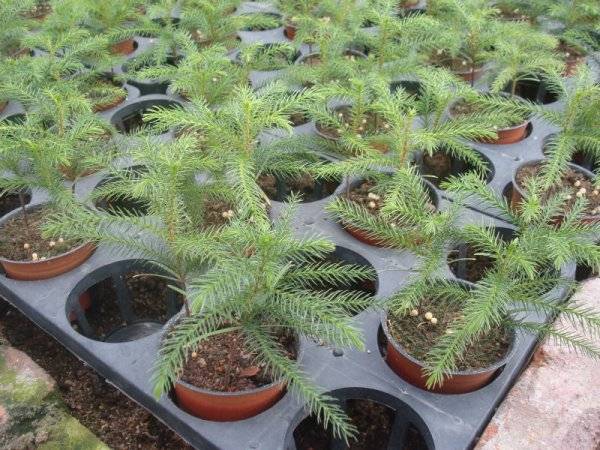
Breeding araucaria is a difficult and time-consuming process that does not always give a positive result.
The second method is grafting, which is carried out in the second half of the summer:
- Half-lignified upper shoots are used as planting material. If there are none, side branches will do, but they may not fully convey all the decorative characteristics of the mother tree.
- Shoots are cut in the middle of the branch. For a day, they are left in the air to dry out the cuts.
- The cut is cleaned of juice residues, covered with wood or crushed activated carbon.
- The cuttings are dipped into the nutrient mixture. For its preparation, peat and sand are mixed in equal parts. Watered, covered with a plastic bottle or film on top.
- Every day, the canopy is removed to ventilate the cuttings, watering is carried out as needed.
With proper care, cuttings take root by the beginning of winter, after which they can be transplanted in separate containers.
Araucaria is a beautiful and unusual indoor tree that makes you fall in love at first sight. It is quite unpretentious and easy to care for, the main thing is to water it, feed it and provide proper lighting.
